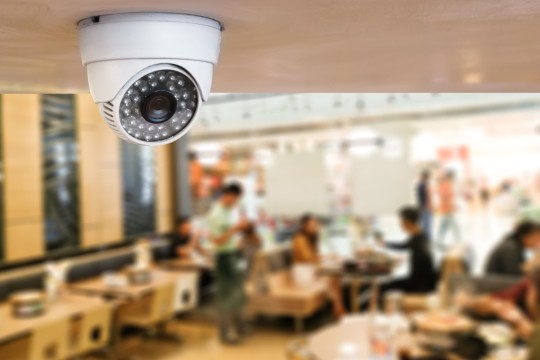#TechnologyAdvancements
Text
#SolderMask#PCBDesign#ElectronicsEngineering#CircuitBoard#PCBManufacturing#LaserDirectImaging#UVSolderMask#EcoFriendlyTech#IPCStandards#HighFrequencyPCB#HalogenFree#TechnologyAdvancements#SustainableManufacturing#ElectronicComponents#EngineeringInnovation#USA#Europe#switzerland#germany
0 notes
Text
Unlocking Asia's Growth: Discover the Secrets of Emerging Markets and Investment Prospects
#Asianmarkets #brandrecognition #culturalnuances #Emergingmarkets #growthpotential #infrastructuredevelopment #intellectualproperty #investmentprospects #localizationstrategies #technologyadvancements
#Business#Asianmarkets#brandrecognition#culturalnuances#Emergingmarkets#growthpotential#infrastructuredevelopment#intellectualproperty#investmentprospects#localizationstrategies#technologyadvancements
0 notes
Text
Explore the rapidly developing IT consulting market in Nepal, where experience and creativity are combining to expand the boundaries of technology. IT consulting offices are scattered throughout the cities of Nepal and Pokhara, acting as centers of creativity and problem-solving expertise. These dynamic environments provide a wide range of services, including cloud computing, digital transformation, and cybersecurity in addition to software development.
#DigitalTransformation#NepalITConsulting#CloudComputing#TechnologyAdvancements#BusinessSolutions#SoftwareDevelopment#IT consulting services#IT consultant
0 notes
Text
Navigating the Landscape of Simulation Software Solutions in Industry 4.0 and Beyond
The global simulation software market size is estimated to reach USD 51.11 billion by 2030, registering a CAGR of 13.6% from 2024 to 2030, according to a new study by Grand View Research, Inc. Simulation software is being used for training personnel. It is replacing the traditional real-time training techniques, which incurred huge investments annually for companies. The use of simulation for training purposes helps reduce training costs as companies need to make a one-time investment for software implementation. The software also helps enterprises minimize production costs by enhancing the product development process.

Simulation Software Market Report Highlights
The market is being driven by reduced training costs for personnel in various industries and sectors, such as automotive, defense, healthcare, and electrical
The service segment is expected to register a CAGR of 15.0% owing to the growing demand for customized simulation solutions, such as design and consulting
The cloud-based segment is expected to register the fastest CAGR of approximately 15.4% over the forecast period owing to benefits, such as easy and low-cost implementation
The automotive segment dominated the market in 2023 and is expected to hold a major share by 2030 owing to the early adoption of virtual testing tools in the automotive industry
North America is expected to account for the highest market share followed by Asia Pacific, by 2030 owing to the growing investments in R&D and defense in countries, such as the U.S.
Leading players are focusing on developing new simulation software solutions, to capture maximum share
For More Details or Sample Copy please visit link @: Simulation Software Market Report
The need for developing prototypes and the chances of product failure are considerably reduced through the use of simulators, as the product is virtually tested for all possible glitches before the commencement of production. Furthermore, simulation-based tools help product developers reduce the time spent on R&D processes as it enables them to obtain a realistic view of a product or process under study or review. Organizations across the globe are increasingly implementing the program and analyzing tools to enhance the entire product development cycle, reduce time to production, ensure delivery of high-quality products in minimal time, and reduce the overall cost to the company with respect to R&D.
It requires a skilled workforce or personnel with the required knowledge and understanding. This is leading to several manufacturers being reluctant to adopt this technology as the need for a skilled workforce incurs additional costs. The COVID-19 pandemic had an adverse impact on the global market. The closure of national and international borders in major countries, such as China, Japan, and India, has caused severe supply chain disruptions. In addition, the temporary shutdown of manufacturing operations has led manufacturing companies to face severe budgetary issues, resulting in delayed subscription renewal payments during the pandemic’s initial phase. However, recovering economies and opening businesses are expected to help the market grow at a rapid pace over the forecast period.
#SimulationSoftwareMarket#VirtualModeling#IndustrySimulation#DigitalTwin#VirtualPrototyping#TrainingSimulation#EducationalTechnology#Industry4.0#TechnologyAdvancements#SimulationSolutions
0 notes
Text
The Impact of Training for Microsoft Azure Certification on Your Career
Maintaining a competitive edge in the rapidly evolving field of technology needs not just proficiency but also a dedication to lifelong learning. Visit our Blog to know more!
0 notes
Text
War against the robots? Are we creating our own destruction?

The advancements in technology have led to an alarming possibility - the idea of a potential war against robots. With innovations in robotic technology, the fear of robot warfare has become a topic of concern for experts. The question arises - are we creating our own destruction through the continuous development and enhancement of technology?The idea of a future where robots threaten humanity may seem like a plot from a science fiction movie, but it is a possibility that cannot be ignored. As we continue to make progress in the field of robotics, we must consider the potential risks and impact on our society.Through this article, we will delve into the rise of artificial intelligence, the implications of machine learning, advances in robotic technology, human-machine interaction, and ethical considerations surrounding the use of robots. We will also explore the impact of automation on the job market and the role of robotics in warfare. Our aim is to understand the potential future threats posed by these advancements and to discuss possible strategies to mitigate them.As we move forward in our quest for technological advancement, we must approach it with caution and responsibility. The discussions and considerations presented in this article are crucial to ensure the long-term survival of our society. Join us in this thought-provoking journey as we explore the possibilities and potential consequences of our actions.
The Rise of Artificial Intelligence (AI)
Artificial intelligence (AI) refers to the ability of machines to emulate human intelligence. In recent years, there have been significant advancements in AI technology, with machine learning algorithms becoming increasingly sophisticated. These advancements have led to robots that can perform complex tasks and analyze data with incredible accuracy.The development of AI technology has the potential to revolutionize various industries, from healthcare to finance. However, there are also concerns about the future threats posed by AI technology. As robots become more autonomous and intelligent, there is a risk that they could be utilized for malicious purposes or even turn against their human creators.The Future of AIThe future of AI is uncertain, with some experts predicting a world where robots and humans coexist peacefully, and others warning of a potential war between the two. There is no doubt that AI technology will continue to advance, and it is up to us to ensure that it is used responsibly and ethically.The Importance of Responsible InnovationAs with any new technology, there is a need for responsible innovation when it comes to AI. This means that scientists, policymakers, and the public need to work together to ensure that AI technology is developed in a way that is safe for humans and the environment. It also means that there need to be clear guidelines and regulations in place to prevent the misuse of AI technology.Mitigating Future ThreatsTo mitigate the potential future threats posed by AI technology, it is important for researchers to consider the long-term implications of their work. This means anticipating how AI technology could be misused and taking proactive measures to prevent it. It also means educating the public about the risks and benefits of AI technology so that they can make informed decisions about its use.
The Implications of Machine Learning
Machine learning algorithms have become increasingly prevalent in our daily lives, from recommending products to personalized advertising. While the benefits of such algorithms are clear, there are also significant societal impacts to consider.Shaping societal normsMachine learning algorithms can shape societal norms by reinforcing biases present in the data they are trained on. For example, if an algorithm is trained on data that is biased against certain groups, it may perpetuate that bias in its recommendations or decisions.Raising ethical concernsThe use of machine learning algorithms also raises ethical concerns, particularly in areas such as healthcare and criminal justice. There is the potential for algorithms to make decisions that have a significant impact on individuals without proper oversight or transparency.Addressing ethical concernsTo address these ethical concerns, there is a need for increased transparency and accountability in the development and deployment of machine learning algorithms. This includes ensuring that algorithms are trained on unbiased datasets and that their decision-making processes are explainable.
Advances in Robotic Technology
Recent years have witnessed significant progress in the field of robotics, with unprecedented innovation in technology leading to the development of advanced robotic capabilities. Nanotechnology and modified DNA are just two examples of the breakthroughs that have paved the way for potential robot warfare. However, with these technology advancements also come future threats that must be considered.The potential for robots to be weaponized is a matter of concern, with the ability to program drones and other robotic devices to carry out military tasks. This development raises questions about the safety of civilians and the impact on the international community. Additionally, the advancement of artificial intelligence in robots brings about new dangers, as machines can make their own decisions and potentially act against human interests.https://www.youtube.com/watch?v=GFD_Cgr2zhoThe Need for RegulationThe rapid pace of technological advancement has outpaced the establishment of regulatory frameworks to manage the use of robots. The UN Convention on Conventional Weapons is currently considering the development of a framework to regulate lethal autonomous weapons systems (LAWS). However, there is still much work to be done in creating a cohesive international strategy for the safe and ethical development of advanced robotics.The Risks of Cyber AttacksAnother threat posed by robot warfare is the possibility of cyber attacks, which could potentially compromise the robots' systems and cause unintended harm. Cybersecurity measures must be implemented to ensure that robotic systems cannot be hacked and turned against their intended targets.
Human-Machine Interaction
As technology advancements continue, the relationship between humans and machines is evolving. Human-machine interaction (HMI) has become an essential part of our daily lives, from smartphones to virtual assistants.The impact of HMI on society has been significant. It has increased efficiency in many industries, making tasks faster and more accurate. However, it has also raised concerns about the potential loss of jobs as automation becomes more prevalent.One of the challenges of HMI is creating intuitive interfaces that are easy for humans to use. This requires an understanding of human behaviour and decision-making processes. With machine learning, HMI can be adapted to individual users, making it more personal and effective.Another challenge of HMI is ensuring that machines are safe to use. With the development of autonomous machines, there is a concern about the potential for accidents or misuse. It is crucial to establish safety guidelines and regulations to mitigate these risks.As HMI continues to grow and expand, it will have a significant impact on society. It will change the way we work, communicate and even think. It is essential to consider the societal impact of HMI and to ensure that it is used in a responsible and ethical manner.
The Job Market and Automation
The increasing role of automation in various industries has raised concerns about job replacement. As technology advancements continue to accelerate, the fear of mass unemployment due to automation is becoming a reality.The Impact of Automation on the Job MarketAccording to a report by the Bank of England, up to 15 million jobs in the UK could be at risk of automation. This could potentially lead to a significant shift in the job market, with low-skilled workers being particularly vulnerable to job replacement.However, automation also creates new job opportunities, particularly in the tech industry. As businesses increasingly rely on technology, the need for skilled workers to develop and maintain such systems is on the rise. The challenge lies in ensuring that the displaced workers have access to these new opportunities and are equipped to adapt to the changing job market.The Need for Reskilling and UpskillingAs automation continues to transform the job market, reskilling and upskilling are becoming more important. Workers need to adapt to the changing job market by acquiring new skills that are in demand in the age of automation.Businesses can play a crucial role in this process by investing in their workers' training and development. This can help the workforce stay ahead of the curve and remain relevant in the age of automation. Governments can also support reskilling and upskilling programs to ensure that workers have access to training and education.The Future Threats of Job ReplacementWhile automation has the potential to improve efficiency and productivity, its unchecked growth could pose a threat to the job market in the long run. As more jobs become automated, there is a risk of widening income inequality, particularly for low-skilled workers.Automation also has the potential to disrupt entire industries, leading to mass job displacement. This could have wider social and economic implications, including increased inequality, social unrest, and political instability.
Ethical Considerations in Robotics
As robots and AI become increasingly prevalent in our society, it's essential to consider the ethical implications of their development and use. While advanced technology has the potential to revolutionize our lives, it also raises significant concerns about privacy, safety, and power imbalances.Privacy ConcernsOne of the primary ethical concerns with robotics and AI is the potential invasion of privacy. As these technologies become more sophisticated, they can collect vast amounts of data about individuals, their behaviours, and their preferences. This data can be used to target individuals with advertising or influence their decision-making without their knowledge or consent.Furthermore, robots that use facial recognition technology can compromise an individual's anonymity and increase the risk of targeted surveillance. It's crucial that developers of such technologies prioritize privacy and implement rigorous safeguards to protect personal data.Security and SafetyThe development of autonomous robots raises significant safety concerns. These machines could malfunction, potentially causing harm to individuals or the environment. Moreover, if robots become increasingly autonomous, it is crucial to ensure that they are secure and protected from hacking and other forms of malicious interference.The possibility of weaponized robots also raises serious ethical concerns, particularly in the context of warfare. Concerns have been raised about the development of autonomous weapons that can independently identify and engage targets, making decisions without human intervention.Power ImbalancesThe development of advanced robotics and AI also has the potential to exacerbate existing power imbalances in our society. Those who control these technologies could gain a significant advantage over those who do not, potentially leading to increased inequality and social unrest.It's essential that we consider the impact of these technologies on our society and ensure that they are developed and used responsibly. Developers must prioritize the ethical implications of their work, and policymakers must create guidelines and regulations to ensure that these technologies are used for the benefit of humanity.

The Role of Robotics in Warfare
Robotic technology has advanced significantly in recent years, with the potential for robots to play a major role in future warfare. The development of unmanned aerial vehicles (UAVs) or drones is an example of the increasing use of robotics in military operations. Drones have the advantage of being able to operate in dangerous or hard-to-reach areas without risking human lives. However, their use also raises ethical concerns over the potential for remote attacks and civilian casualties.Robotics in warfare is not a new concept, with the use of bomb disposal robots dating back to World War II. However, recent advancements in technology have led to the development of more sophisticated robots capable of carrying out a wider range of tasks. For example, Boston Dynamics' robots, such as the Spot and Atlas models, can navigate rough terrain and perform tasks like opening doors and carrying heavy loads.The use of robots in warfare also poses potential threats. One major concern is the possibility of robots malfunctioning or being hacked, causing them to attack indiscriminately. Another concern is the potential for robots to be used as autonomous weapons, meaning they could make decisions without human intervention. This has led to calls for regulation and ethical guidelines surrounding the use of robots in military operations.The Future of Robot WarfareAs technology continues to advance, it is likely that robots will play an even greater role in warfare. The development of nanotechnology and modified DNA, for example, could allow for the creation of robots with even greater capabilities. However, it is important to consider the potential risks and ethical implications of such advancements.Ultimately, the future of robot warfare will depend on responsible development and regulation. It is crucial for policymakers and scientists to consider the long-term impact of robotics on society and ensure that they are used in a way that prioritizes human safety and well-being.
The Need for Responsible AI Development
As technology advancements continue to accelerate, ethical concerns regarding the progress of AI and robotics persist. With the potential for future threats to humanity, it is essential to promote responsible AI development to ensure a safe and prosperous future for all.The Role of Ethics in AI DevelopmentEthics play a fundamental role in the development of AI technology. It is essential to consider potential future threats and ethical concerns throughout the research and development process. It is crucial to create ethical guidelines for the development and deployment of AI to ensure its safe and responsible use.Collaboration between Scientists and PolicymakersResponsible AI development requires close collaboration between scientists and policymakers. The collaboration will ensure that AI advances align with ethical guidelines and that policymakers can mitigate potential societal impacts.The Importance of Public InvolvementPublic involvement is crucial in the development of AI technology. A public consensus is needed to ensure the safe, responsible, and ethical use of AI. Transparency is essential in the development and deployment of AI technology. The public must have access to information regarding the potential impact of AI.The Need for a Regulation FrameworkSome experts argue that self-regulation in the development of AI technology is insufficient. They suggest that a regulatory framework is necessary to monitor and mitigate potential risks. A framework can ensure that AI advances are transparent, accountable, and aligned with ethical guidelines.
The Future of Robotics and Humanity
As technology continues to advance at an unprecedented pace, the future implications of robotics on humanity are uncertain. While some argue that robots have the potential to revolutionize various industries and improve our daily lives, others are concerned about the potential threats they pose.One of the most significant concerns is the impact of automation on the job market. With robots and AI becoming increasingly capable of performing tasks that were once the sole domain of humans, many fear that job displacement could become a widespread issue. However, proponents argue that automation could lead to new job opportunities and improve efficiency and productivity.Another consideration is the ethical implications of robotics and AI. As machines become more sophisticated and autonomous, questions arise about the appropriate use of such technology. There is a need for regulations to ensure responsible development and deployment of AI to avoid potentially harmful consequences.Overall, the impact of robotics on society and humanity will depend on how we choose to use this technology. While there are certainly risks and challenges, there are also opportunities to improve our quality of life. It is up to us to ensure that progress is made in a responsible and sustainable way that benefits society as a whole.
Overcoming the Threats
As the development of robotics and AI continues to advance rapidly, it is essential to consider the potential threats and impacts on society. While these technologies offer significant benefits, their unchecked use could pose a considerable risk to human survival, as discussed in previous sections.To overcome these threats, it is essential to adopt a proactive approach to the development and use of these technologies. This includes responsible innovation and the implementation of regulations and ethical guidelines.The Importance of Responsible InnovationResponsible innovation involves the consideration of long-term societal and environmental impacts in addition to short-term economic benefits. It emphasizes the need for a balanced approach to technology development, which takes into account the potential risks, benefits, and ethical concerns.Developing robotics and AI responsibly requires collaboration between scientists, policymakers, and the public. By involving different stakeholders in the innovation process, we can ensure the technology's safe and ethical use.Proactive Measures to Mitigate RisksIn addition to responsible innovation, proactive measures can help mitigate the risks associated with advanced robotics and AI. These measures include regular risk assessments, the adoption of ethical guidelines and regulations, and the establishment of effective governance frameworks.Furthermore, investments in research and development are critical to understanding the potential consequences of these technologies and developing effective mitigation strategies. By investing in these measures, we can ensure that robots and AI are developed and used responsibly, ensuring a sustainable future for society.
Conclusion
In conclusion, the potential war against the robots should not be taken lightly. It is crucial to consider the implications of technology advancements and their impact on future survival. While the rise of artificial intelligence and robotic technology presents exciting opportunities, it also poses significant risks. As we push the boundaries of innovation, it is essential to exercise caution and responsibility.We
Read the full article
#artificialintelligence#autonomy#ethicalconcerns#futurethreats#human-machineinteraction#machinelearning#robotwarfare#societalimpact#technologyadvancements#waragainsttherobots
0 notes
Photo

~ai? i midzdz usu msiaie tnai aiutning ii tnidz osia?~
Unlock the whimsical world of Pinterest and let your creativity soar.
0 notes
Text
#InnovationInSociety#TransformativeScience#InnovativeSolutions#ScienceAndSociety#TechnologyAdvancements#ScientificDiscoveries#Innovation#ddelhi
0 notes
Text
Revolutionizing Visuals with Fan Hologram Technology
Explore the cutting-edge world of fan holograms, where innovation meets mesmerizing visuals. Our fan hologram technology creates stunning 3D displays that captivate audiences. Immerse yourself in the future of visual entertainment as fan holograms redefine the way we experience content. Discover the magic of holographic displays, blending technology and art seamlessly. Elevate your events or presentations with the Fan Hologram, setting new standards for visual excellence. Step into a realm where imagination comes to life, making every moment unforgettable. Join the holographic revolution and witness the extraordinary with Fan Hologram technology.
#3d hologram display fan#3d hologram fan#hologram projector#3d hologram led fan#celebrities#fan hologram#fashion#technologyadvancements
0 notes
Text
🔋 Say goodbye to manual sorting and embrace automation with battery cell sorting machine! ⚡️ No more time wasted manually organizing - let the power of technology do the work for you! 🚀 Join the battery revolution with our automatic sorting machine today and witness the future of efficient battery production firsthand! 😍
#lithiumbattery#lithiumbatterypack#lithiumbatteryfactory#lifepo4lithiumbattery#daxingpower#newenergy#batterymanufacturer#TechnologyAdvancements#Efficiency#BatteryRevolution#Automation
0 notes
Text
Answer1-Revolution in the quick-service hotel sector was brought about by the drive-through window's advent. In terms of its reliance on hardware, software, and communication devices related to technology, I think that the latter has had the biggest impact on its evolution. The drive-through experience has been completely transformed by items like wireless headphones and intercom systems, which enable staff members to interact effectively and customers to place orders effortlessly. In fact, communication gadgets have been the main factor in the drive-through concept's popularity

Answer2 To protect the safety and security of our visitors, staff, and property, we have installed video surveillance in our food and beverage manufacturing, storage, and serving areas. This technology helps to swiftly resolve any situations that may arise in addition to acting as a deterrent to possible theft or wrongdoing.We want to reassure you that keeping everyone safe and comfortable is our top priority. Surveillance cameras are useful for monitoring and preventing unauthorized.

3.Answer-A)Software innovations simplify processes, improving accuracy and efficiency in jobs like personnel scheduling and payroll management. By reducing human mistake, these technological solutions help human resource managers save time and money.
B)Artificial intelligence (AI)-driven technologies that evaluate applications, evaluate applicants, and forecast job fit are set to revolutionize the hiring process in the future. Remote job interviews might benefit from virtual reality as well, as it offers a more immersive experience. Furthermore, social media and internet platforms will keep influencing how companies and job seekers interact, resulting in an increase in networking opportunities around the world. Finally, data analytics will enable HR managers to make well-informed choices on employee retention.

4.Answer-In the next five years, I anticipate that software advancements will undergo the most significant changes in the foodservice industry. We'll likely see increased integration of AI for predictive analytics in inventory management and customer preferences. Moreover, innovative software solutions may emerge to streamline order processing and enhance the overall customer experience, reflecting a continued trend toward tech-driven efficiency in foodservice operations.

1 note
·
View note
Text
Development of technology
Answer 1:- drive through development is mostly influence by POS systems. These is very intelligent development which minimized the time usage of people.

2. Technology advancements
Answer 2: as a employee, i would try to calm her down and explain them our security regulations. Moreover , i must try to explain her that it is all for our customers security concerns and trying to lower the crime rates or theft in the hotel.

3. Human resource management
Answer 3:- three ways in which advances in technology have had a major influence on cost control in human resource management:-
It lead to management of data for long term as a base of record and security.
Recruitment advancement paced as there are multifarious ways for job applications
Performance advancement: it enhance the performance as hotel gain continuous feedbacks and errors.

4. Future innovation
Answer 4:-
1. Advancement in customer interactions
2. Hardware development
3. Food service operations

1 note
·
View note
Text
Unlocking Asia's Growth: Discover the Secrets of Emerging Markets and Investment Prospects
#Asianmarkets #brandrecognition #culturalnuances #Emergingmarkets #growthpotential #infrastructuredevelopment #intellectualproperty #investmentprospects #localizationstrategies #technologyadvancements
#Business#Asianmarkets#brandrecognition#culturalnuances#Emergingmarkets#growthpotential#infrastructuredevelopment#intellectualproperty#investmentprospects#localizationstrategies#technologyadvancements
0 notes
Text
~ai? i midzdz usu msiaie tnai aiutning ii tnidz osia?~

Ready to dive into the playful paradise of Pinterest? Get ready to
0 notes
Text
Sales Forecasting Techniques: Using Data Analysis to Determine the Right Sales Force Size
In the dynamic world of healthcare business, the ability to predict sales accurately is a game-changer. When it comes to determining the right size for your sales team, harnessing the power of data analysis can provide invaluable insights. In this article, we'll explore practical techniques that leverage data to help you make informed decisions about your sales force size.
Write to us at [email protected] to explore practical techniques that leverage data to help companies make informed decisions about their sales force size.
The Data Advantage:
Data serves as the foundation of informed decision-making, and sales forecasting is no exception. Start by gathering historical sales data. This wealth of information holds patterns, trends, and seasonal fluctuations that can offer valuable insights into your sales performance.
Decoding Trends:
Examine your sales data over time to identify recurring patterns. Do certain months or quarters consistently show higher sales? Recognizing these trends enables you to allocate resources efficiently, ensuring your sales team is appropriately sized to meet peak demand.
Customer Insights:
Delve into customer data to understand their purchasing behaviors. Analyze demographics, buying frequency, and preferences. This data-driven approach helps tailor your sales team size to different customer segments, ensuring personalized attention where it matters most.
Market Dynamics:
External factors significantly influence sales. Keep an eye on economic indicators, industry shifts, and competitor activities. Adjust your sales team size based on anticipated market changes, ensuring you're well-prepared to respond effectively.
Embrace Technology:
Leverage modern tools like Customer Relationship Management (CRM) software. These platforms consolidate customer interactions, providing a comprehensive view of sales activities. Analyzing CRM data highlights effective sales strategies, enabling you to fine-tune your team size accordingly.
The Power of Forecasting Models:
Harness statistical models to forecast future sales. Techniques like linear regression and time-series analysis use historical data to predict future trends. These models empower you to anticipate demand, ensuring your sales team remains optimally staffed.
Balancing Scalability and Flexibility:
Account for growth in your sales forecasting. Ensure your sales team size can expand alongside emerging business opportunities. Being adaptable and responsive positions you to capture new markets effectively.
A Cycle of Review and Refinement:
Sales forecasting is an ongoing process. Regularly revisit and refine your analysis. Market dynamics evolve, and your sales team size should adapt to remain effective.
In Conclusion:
Data analysis is the compass guiding your healthcare sales forecasting journey. By tapping into historical sales data, decoding trends, understanding customer behaviors, considering market dynamics, embracing technology, utilizing forecasting models, and ensuring scalability, you can confidently determine the optimal size for your healthcare sales team. Remember, success stems from the ability to adapt and fine-tune your approach over time.
Visit our website now: https://www.anervea.com/
#SalesForecasting#DataDrivenInsights#OptimizeSalesTeam#HealthcareBusiness#CustomerBehavior#MarketTrends#TechnologyAdvancements#Scalability
0 notes
Text
𝙍𝙚𝙣𝙚𝙬𝙖𝙗𝙡𝙚 𝙀𝙣𝙚𝙧𝙜𝙮 𝙄𝙣𝙙𝙞𝙖 𝙀𝙭𝙥𝙤 2023
Here at 𝗠𝗲𝗺𝗯𝗿𝗮𝗻𝗲 𝗗𝗲𝗰𝗼𝗿𝘀, we have crafted innovative Exhibition Stands For Top-notch Brands, Covered Across 𝟓𝟎𝟎+ 𝐒𝐪. 𝐌𝐞𝐭𝐞𝐫𝐬 At 𝗥𝗲𝗻𝗲𝘄𝗮𝗯𝗹𝗲 𝗘𝗻𝗲𝗿𝗴𝘆 𝗜𝗻𝗱𝗶𝗮 𝗘𝘅𝗽𝗼 𝟮𝟬𝟮𝟯!
So why wait any longer? Contact one of our artistic exhibition stand designers and let us design yours!
𝙂𝙞𝙫𝙚 𝙪𝙨 𝙖 𝙘𝙖𝙡𝙡 𝙩𝙤𝙙𝙖𝙮
📞 +91-8800569899
📧 [email protected]
🌐 www.membranedecors.com










#REI2023#RenewableEnergy#GovernmentSupport#SustainableFuture#AwardsNight#IndustryExcellence#SolarEnergy#RenewableEnergyIndia#REIExpo#Sustainability#InformaMarketsIndia#MembraneDecors#solarpower#solarsolutions#solarystem#smarttech#technology#tech#LAPPIndia#TechnologyAdvancements#lapp#bergen
0 notes